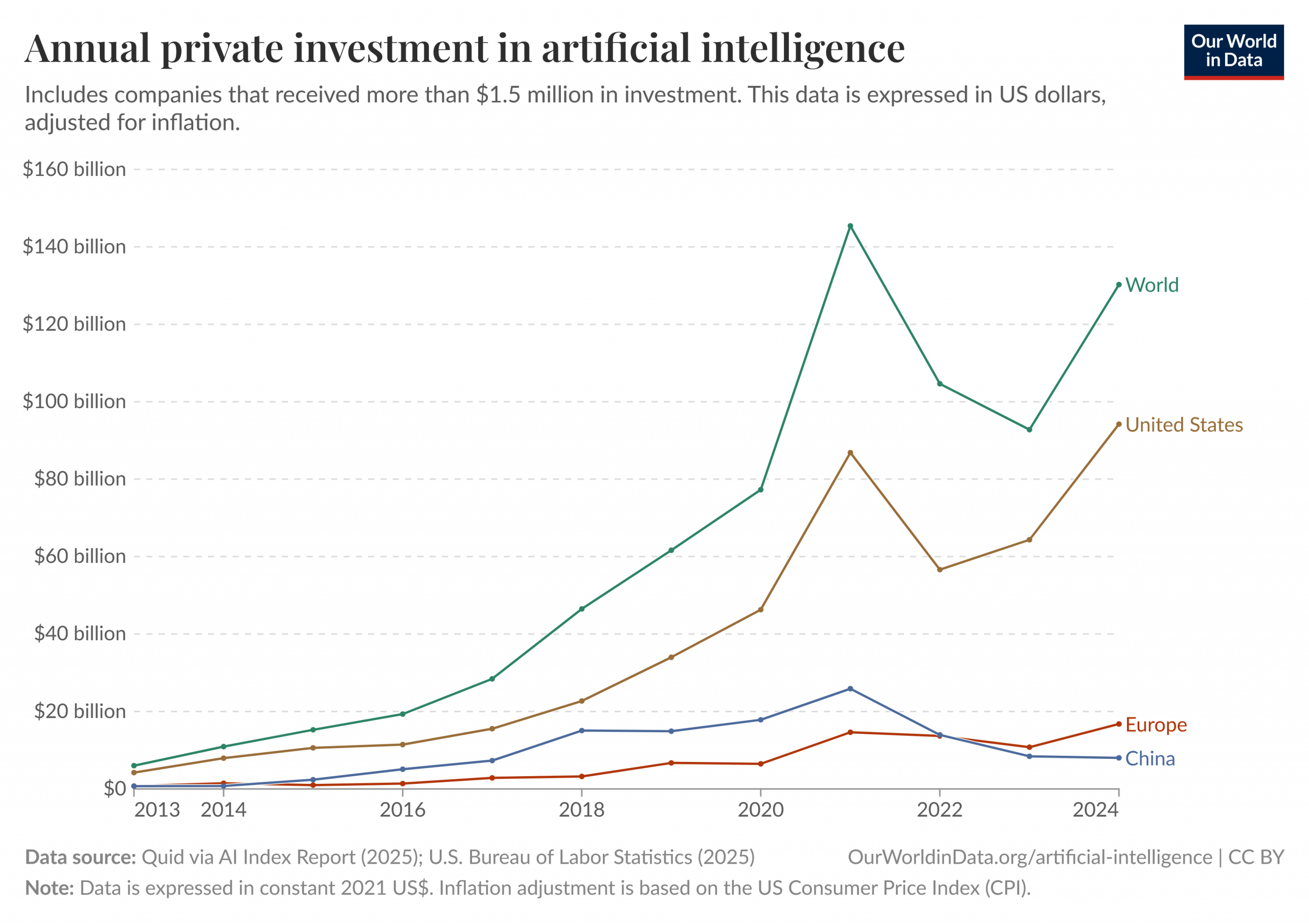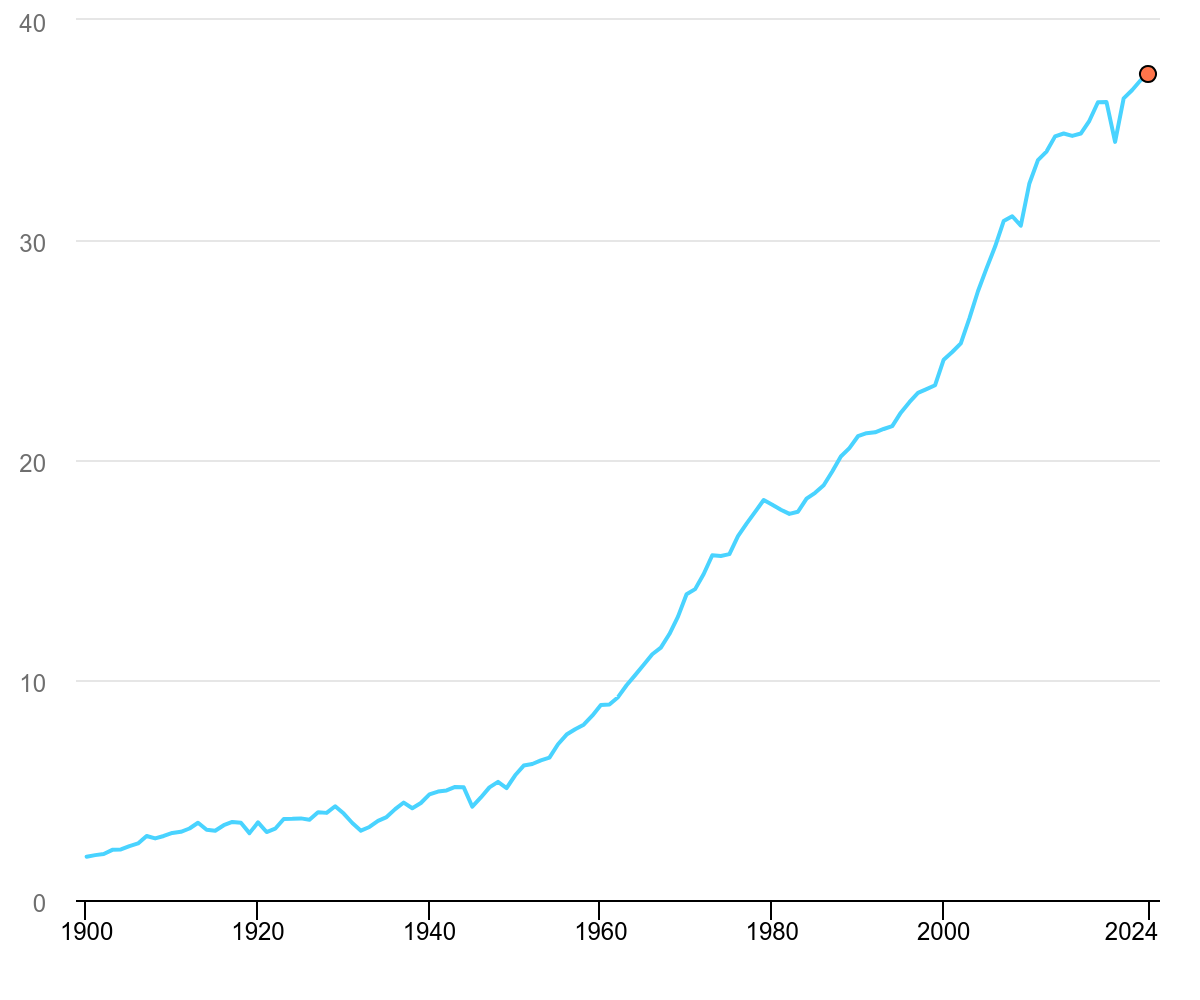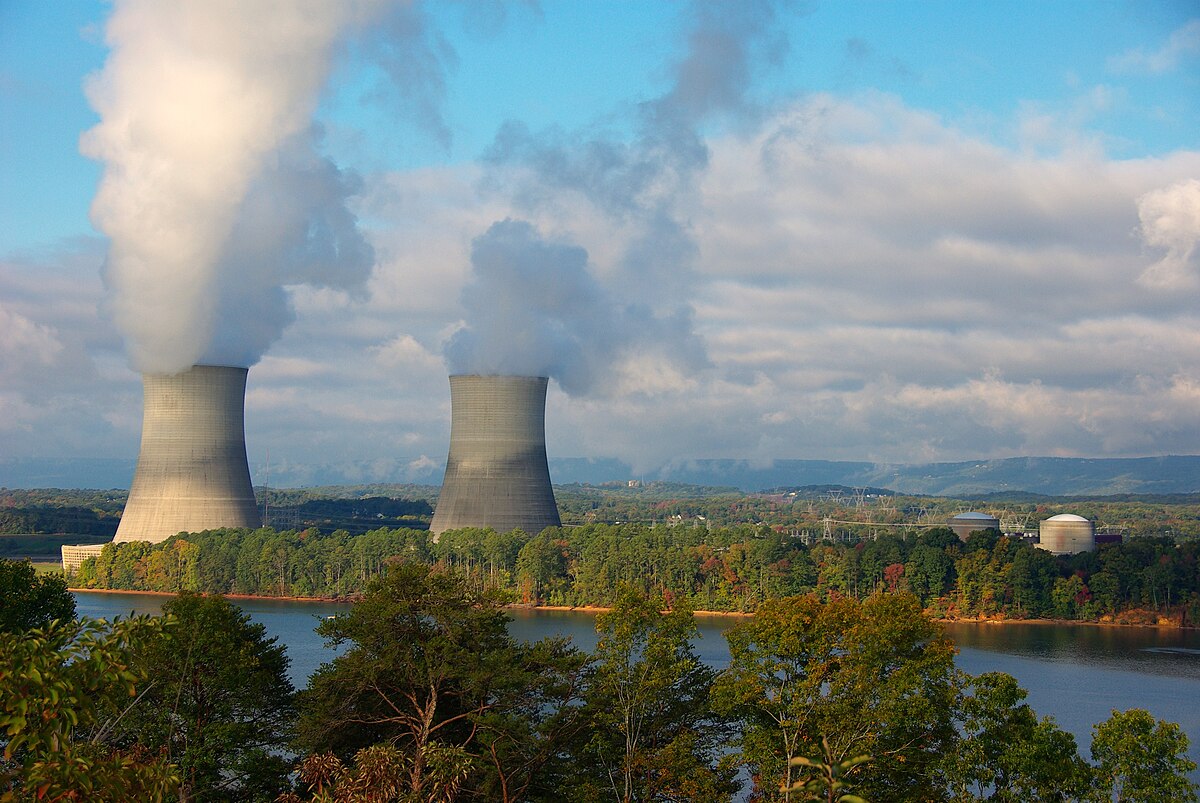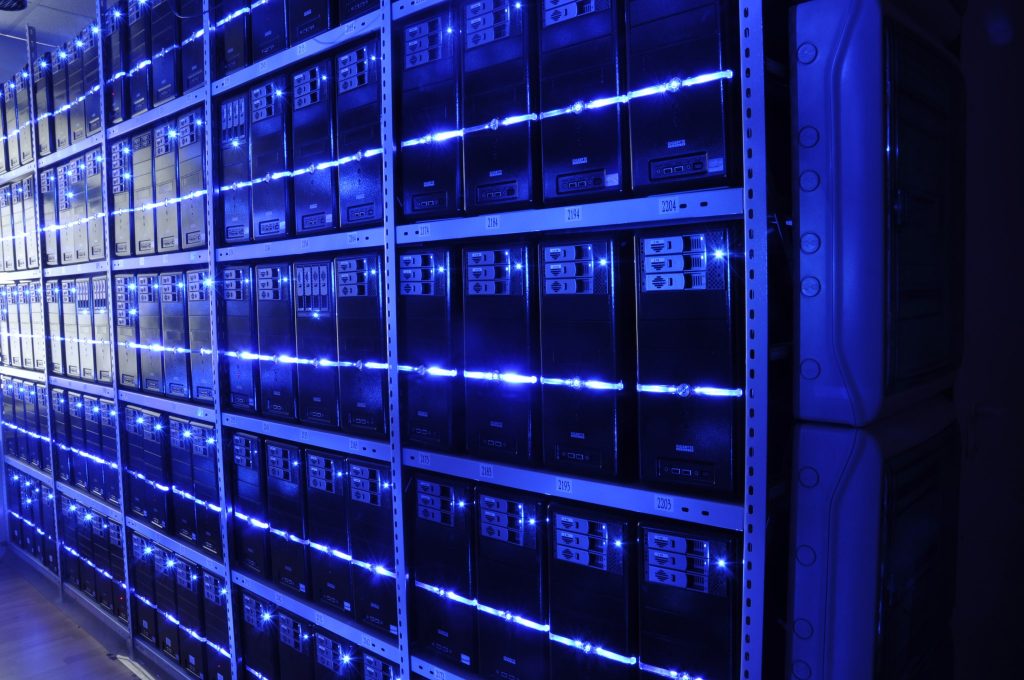THE MODERN PROMETHEUS
The introduction of a revolutionary technology is always followed by unforeseen consequences. Like a shadow, it follows the light of innovation, never leaving its side. It is how we handle the unintended consequences of our technology that makes the difference between gift and curse. Our earliest ancestors knew law in the form of fire. When it crackled under a roast and when it seared them, but they fed it regardless. Although, when the Greek titan Prometheus granted fire to mankind, could he have predicted the lengths humanity would go to keep it alive?
Our modern Prometheus, John McCarthy, is considered to be the father of AI. In the 1950s, he pioneered what would lead to the innovation of an age, an Artificial intelligence (AI) powered by electricity that will reshape the course of history as fire once did.1 It’s no theory anymore, AI is here. Yet, if we are to account for this law of innovation we must ask ourselves: If AI is the modern fire, will the consequences of keeping it alive outweigh the warmth it provides? Because like fire, computers can grow. When the flames reach the sky, who can say what it will demand from us? Confronted with Artificial Intelligence, we must ask ourselves, will its hunger for power overwhelm us?
THE MODERN FIRE
From the hearths of ancient Greece, to the humming tune of silicon, the fire has endured. While it has changed form, its essence remains the same. Entering the 21st century, computers are everywhere. Commercial and consumer interests alike, held aloft by powerful machines that digest our chaotic world into quantifiable data. These “data centers” are large physical facilities that house specialized computers which store and process massive amounts of data. They enable the shared communication of computers across the world and preform a myriad of important tasks which keep the internet running smoothly. Data centers are the backbone of the digital age, so their development is a top priority for enterprises and governments. However, a massive spike in their development currently driven by one recent innovation in particular, AI.2
AI EMERGES
The advent of artificial intelligence, or AI, is the next step of the digital revolution. To its strongest advocates, AI is expected to change human history forever. Unlike other innovations, AI has the ability to adapt, evolve, and generate new solutions to problems, making it applicable almost everywhere. Every field or aspect of life, from creative to industrial, can implement AI. It will revolutionize how humans interact with technology itself. Inquiries are sent from the user’s device and are received by the AI data center, returning an output back to the user. All the processing is done separately among a network of intercommunicating servers, which makes it very convenient and accessible.3 AI is able to process and interpret massive amounts of data without human intervention, which is very valuable in today’s information-filled age.
It is for these reasons that there is a lot of faith in AI.
THE RISE OF AI
Big tech companies like OpenAI, Meta, and Nvidia have been spearheading AI’s operation for the last few years while AI continues to be the latest and greatest business frontier. All around the world, investments in AI technology have been increasing steadily since 2015 (Figure 1), with the United States currently leading by significant margin. As of 2025, AI investments now account for 92% of American GDP growth according to Yahoo Finance.4 This funding reflects the growth of the emerging AI industry, allowing it apply its products faster. Currently, 77% of computerized devices have an AI of some sort installed on them and is expected to rise still.5, and around 72% of businesses use AI in their operations.6 We are currently huddled around the fire’s warmth, watching as it sways in the cold wind. Another log is thrown into the pit.

THE MODERN LUMBER
When humans began to harness fire, finding reliable sources of fuel became priority. Trees were chopped, blubber was harvested, the earth was fed to the flame. AI being the modern fire, we will see that in essence nothing has changed.
WHY AI CONSUMES MORE POWER
As fire needs lumber to burn, computers need electricity to run. Data center’s particularity need constant, uninterrupted power supply to compute seamlessly. The electrical components that use the power are known as General Processing Units or GPUs, and act as the brain of the machine, so they account for roughly 60% of the power data centers consume. However, GPUs produce a lot of heat, which could damage hardware if not dissipated. Which is why data centers incorporate means of cooling within their construction. Common cooling systems like water cycling, accounts for 7-30% of power consumed depending on the efficiency of the design, and other energy demands like security systems and lights can account for the rest.8
AI introduces a new factor into this equation. Because while the infrastructure of AI is very similar to standard data center programs, it’s significantly more “computationally dense”, and therefore requires more power to run. AI operates through an algorithmic framework known a machine-learning model, which is a model of logic that resembles a web of interconnected neurons. Through trial and error and referencing large sets of training data, it’s is able to learn how to recognize patterns and make decisions. Its therefore able to predict patterns by iteratively refining output until a product is made, this is how generative AI works.9 By simulating human thought processes, AI becomes form of pseudo intelligence made in our image.
When humans began gazing into the fire for longer periods of time, they noticed dancing shapes within its heart. Whether it be by projection or mythological significance, fire was personified and gifted the spirit of life. It is not strange to see that the same spirit has entered our other creations.
HOW DOES MUCH POWER DOES AI CONSUME?
The current model of ChatGPT consumes five times more energy than a Google search for every query,10 and as AI becomes more advanced, its appetite deepens further. The university of Rhode island’s AI lab estimated that OpenAI’s latest large language models (LLM) ChatGPT-5, consumes 8.6 times more energy than ChatGPT-4, using 18 Watt-hours (Wh) of power per prompt. With ChatGPT receiving 2.5 billion queries a day, that equates to around 45 GigaWatt-hours (GWh) of electricity consumed daily if the predictions are correct.11 This applies to other current LLMs too, DeepSeek and OpenAI’s o3 uses 20 Wh per query and 25 Wh per query respectively.
To put that into perspective, a single prompt can almost fully charge a standard phone,12 but a days worth of prompts can power around 45 million homes for 1 hour.13 It becomes an absurd amount of power when factoring in the total amount of data centers there are. On a global scale, in 2023, data centers used 340 TWh of power, accounting for roughly 2% of the world’s energy consumption.14 It might not seem like a lot now, but we are only experiencing the beginning of what is projected to be an unprecedented increase in energy demand. Year by year we can only expect that number to go up as company promises are fulfilled. Because once the ball gets rolling, there is no telling when it will stop.
HOW MUCH POWER WILL AI CONSUME?
Goldman Sachs predicts that by 2030, AI will lead to a 165% increase of data center power demand, requiring $720 billion dollars of infrastructure investment.15 The electrical systems manufacturer Socomec, predicts that this boom will equate an electrical consumption rate of nearly 945 TWh annually, which is more than what the entire country of Japan consumes. They also predict that AI will constitute more than half the energy sector growth in the United States through 2030.16
Training AI models will remain electrically demanding too. Currently, large scale frontier AI training requires approximately 100 to 150 megawatts of power. From S&P Global Analysis, EPRI expects that energy needs will double or triple every year, reaching 2 gigawatts by 2028 and 4 to 16 gigawatts by 2030.17 For reference, 10 gigawatts is roughly equal to the output of 10 nuclear reactors, and can power millions of homes.18
However, beyond 2030, it becomes harder to predict how much energy AI will consume. The world becomes too erratic, especially when it concerns the trends of a rapidly growing technology. But considering that Big Tech has a combined market value worth of 45 trillion dollars, it is safe to say that AI is here to stay.19
Fire by its nature alters the world around it by virtue of its existence, smoke billows from its mouth and fuel is turned to ash. This is the consequence of its perpetuated existence. The consequence of AI follows similarly, yet different. ts operations operates on a scale far exceeding its spiritual predecessor with stunning efficiency, the concern lies at the rate which it has grown. Although, massive Hyperscaler and corporate investments suggest unimpeded growth, physical limitations may place constraints on data center development. This will take the form of strain of preexisting electrical infrastructure. Meanwhile, our means of generating power in the first place continues to jeopardize our natural world in the form of global warming. We are simply not prepared to handle the influx.
THE MODERN SMOKE
This is the consequences of AI as it affects people. Arguably, caused by the disconnect between the AI in concept and AI in practice. Even though scale can be quantified and predicted in theory, real life tends to have different plans. No time was allotted to prepare for AI’s arrival and yet we must confront it now. Nobody plans for their house to burn down, but it happens regardless.
AI’s EFFECT ON ELECTRICAL INFRASTRUCTURE
The looming electrical demands of AI will impart great strain on electrical infrastructure. The U.S. Department of Energy projects an additional 20 gigawatts of data center load by 2030, with the sector expected to consume between 6.7% and 12% of total U.S. power generation by 2028, up from about 4.4% in 2023. Power grids in hosting many data centers will strain to accommodate the large concentration of energy they consume, as no infrastructure exists to mitigate the influx of drainage.20
Yet AI’s rate of power consumption is not distributed equally. While there are data centers around the world, they tend to concentrate in certain locations. In places like Virginia and Ireland, data centers take up 20-25% of power21 For example, in Virginia, large scale data centers have been linked to severe power distortions. Over 75 % of severe voltage distortions were found within 50 miles of major data center activity, and more than half of the worst cases occurred within 20 miles. These distortions, caused by erratic surges in voltage, increase the risk of appliance damage and home fires.22 In Ireland too, in cities like Dublin, data centers are raising the price of electricity for customers. As operators scramble to upgrade the grid to accommodate for AI, power security concerns rise. Data centers consumed almost a quarter of the nation’s power supply in 2025, and the power demand is expected to double by 2026. The risk of power outages is very likely in the near term while officials try to increase capacity to mitigate disaster. New infrastructure takes years to establish, however, and it may not arrive fast enough to prevent potential grid collapse.23
THE PARALLEL CONSEQUENCE OF INNOVATION

Considering the implications of AI’s looming demand for energy, it would not be wrong to assume that we can expect a noticeable spike in carbon dioxide (CO2) and other greenhouse gas emissions. Since the industrial revolution, there has been an nearly exponential increase of CO2 emission caused by human activities (Figure 2), the primary benefactor of being power generation. Fossil fuels like coal and natural gas are burned in thermal power plants to generate current for power, but in that process CO2 is released and enters our atmosphere. The accumulation of this greenhouse gas traps excessive heat on earth, which causes what we call global warming. Global warming threatens to destroy ecosystems worldwide and is the current existential threat scientists and conversationalists are trying to mitigate.24.
Reforms to curb the need for fossil fuel-based energy has been in motion for a while, but while large strides have been made, progress has not been enough to completely remove concern for the accumulation of CO2. As of 2024, 86% of power generated globally still comes from fossil fuels,25 equating to 37.6 Gigtatons of CO2 according to International Energy Association (IEA) estimates.26
COMPUTER BYPRODUCT
A single ChatGPT query generates around 3 grams of CO227. https://www.sustainabilitybynumbers.com/p/carbon-footprint-chatgpt], comparatively not much considering 10 minutes of Youtube emits 4.6 grams of CO228. However, considering the rapid adoption of AI and the amount of queries it gets in a day, the numbers can add up. Assuming that if there are 2.5 billion ChatGPT queries a day, its data centers would emit 7500 metric tons a day.
Other metrics can give us a better scope of data center’s emissions. A 2024 study found that U.S. data centers emitted 105 million metric tons of carbon dioxide, about 2% of total national emissions and a 300% increase from 2018, due to rapid growth caused by AI. Because data centers are still 56% reliant on fossil fuels for power, the continued expansion of AI will indirectly create demand for more fossil fuel based power generation.29
The surge of data center construction itself, could generate roughly 2.5 billion metric tons of carbon dioxide by the end of 2030, according to new research from Morgan Stanley.30 Available at: https://www.reuters.com/markets/carbon/global-data-center-industry-emit-25-billion-tons-co2-through-2030-morgan-stanley-2024-09-03/.] Even though that is small compared to the 37.4 billion metric tons of CO2 emitted globally each year, it is still another 2.5 billion more than would otherwise be emitted. 31. We need not add to our planets burden; if the needs of AI can be met sustainably then it should. Within the same realm of logic we can find reason not to burn the forest for the sake of warmth, we can find reason not to fry our planet for the sake of answers from a machine.
HARNESSING THE FLAME
Environmentally concerned groups like scientists and conservationists consider the most appropriate way to handle AI’s energy demands would merely be an immediate halting of all AI projects and an immediate pivot to renewable energy solutions. However, this is at odds with profit oriented corporate interests, which places the likelihood of this plan being put into action to nearly zero. Although, there exists a model which both interests are met and AI’s appetite is mitigated. Known as the “Twin transition model“, it combines the technological strategies of digital and green technology so they may reinforce each other. Clean energy would curb CO2 emissions, as well as remove strain from preexisting electrical grids by requiring new, more sustainable infrastructure be built. And AI can optimize renewable energy generation and hasten its development to levels on par with oil and gas.32 It is not unreasonable to assume that AI’s energy demands inadvertently inventiveness private and public investment into renewable energy. As there have been active efforts to make this a reality.
Independent parties have voiced their intentions to fully shift to renewable energy. According to an AFCOM survey, 34% of data center respondents intended to adopt renewable sources of energy within the next year and a half. And of those who already adopted renewable sources of energy, most claim it is through solar33.
Big tech has voiced its intention to transition to renewables as well, and are into the process already. Because they are considered to be “trend setters” for the economy, their adoption of net-zero power will prove important in the green transition mission.34 For example, Google reports that its data centers have been powered 100% renewably since 2017, and have made excess energy available to local homes. This opened the door for other data centers to strive for the same. 35 The International Energy Agency (IEA) projects that nearly half of global data center power demand growth by 2035 will be met by renewables such as wind and solar, with Europe expected to meet 85% of new demand from renewable sources.36 However, in the time scale of computers, 2035 is in the far future. However, many forms of clean energy take many years to build and implement. Perhaps in the near future, Hyperscalers will adopt nuclear energy as their source of energy Goldman Sachs predicts. We may perhaps enter a “Nuclear Renaissance”, as countries and big tech warm up to the idea of nuclear energy.37.
NUCLEAR RENAISSANCE
Nuclear energy may become the most practical transition to net-zero data centers in the near future. It produces zero carbon emissions and is safe for the environment. Due to its ability to produce energy at high concentrations with high reliability when done correctly, making it perfect for servers running around-the-clock. An example of a properly implemented nuclear power plant is the Tennessee Sequoyah Nuclear Power Plant (Figure 3). It is able to integrate with nature while powering 1.3 million homes. It works by using irradiating uranium isotopes to boil water and generate steam which spins turbines, in the process converting thermal energy to electrical energy.38 Nuclear energy in general already has nearly 100 years of dedicated science to back it up, making it comparability more understood than solar or wind. For these reasons, it would not be wrong to assume that nuclear might temporarily outshine other net-zero energy sources. 39 While it is not the ‘end-all, be-all’, it will uphold corporate promises to curb CO2 emissions in the near term.

CC-BY-SA-3.0 https://creativecommons.org/licenses/by-sa/3.0/deed.en)
Microsoft and Constellation Energy signed a 20-year power purchase agreement (PPA) to supply Microsoft’s nearby data centers with electricity from the proposed restart of Three Mile Island Unit 1, which operated from 1974 to 2019. The plant, to be renamed the Crane Clean Energy Center, would generate enough power for about 800,000 homes. Meanwhile, Amazon is collaborating with X-Energy to build 5 gigawatts worth of nuclear energy by 2039. By constructing 100 small nuclear reactors, distributed all across their sites, they will be able to implement nuclear quickly and at low cost.40 Meta is currently planning to construct a nuclear power plant in Illinois for the sole purpose of powering their largest data center to be.41. This nuclear renaissance may result in a snowball effect when net-zero energy become commonplace for data center power. Allowing other clean energy solutions a chance to flourish. If initial barriers in funding, reliability, and a negative image can be overcome, it can become a tool for the people.
REALITY CHECK
While optimistic promises should be validated, potential faults should be acknowledged. Making a promise is easy, keeping it is hard. Physical limitations will bottleneck progress and will create a gap of time where fossil fuels are mandatory to keep data centers in operation. The question is, how wide will that gap be?
Natural gas offers significant cost advantages over net-zero energy sources. Permitting for large nuclear plants can take 15 years or more, while a new natural gas facility can often be completed in less than half that time. In states such as Texas, where permitting processes are especially relaxed, a new natural gas plant can be built in as little as two to three years.
Unfortunately, we might only see the benefits of nuclear energy around 2035. Even then, not all nuclear projects fall through, experts told Rystand. Only 15% of approved nuclear projects actually reach completion in the United States due to funding and security complications.42 Not ideal for a nuclear renaissance, but enough to make an impact.
Financial struggles might inhibit renewable progress as well if the AI industry cannot generate a profit. A Bain & Company report estimates that sustaining AI’s expansion will require over $500 billion per year in global data center investment by 2030, supported by $2 trillion in annual revenue to remain viable. Unfortunately, the industry is likely to fall $800 billion short. This means that tech companies must resort to cheaper options for energy, which will come in the form of non-renewables. Additionally, if the industry loses on profit, AI workloads will outmatch the rate of GPU optimization.43 This would inadvertently also limit the extent renewable energy solutions are implemented in the near term, as operators are being forced to prioritize energy reliability and immediacy over sustainability. Unfortunately when you are running a business, keeping the lights on comes before fulfilling promises.
WHAT WOULD PROMETHEUS THINK?
As Prometheus did not foresee the full consequences of fire, we did not foresee the full consequences of AI. It’s rapid implementation granted it an insatiable appetite for electricity, attempting to meet its demands threatens power security and will contribute to climate change. And if these problems are neglected, it will only get worse with time, like a fire spreading tree to tree. However, we are well within our power to prevent them. When the wheels are set into motion, the crowd joins the performance. Following the model of “Twin transition”, the implementation of greener solutions like nuclear energy can mitigate AI’s danger while also allowing its active development. The needs of AI must be met in tandem with the needs of the earth. The slow drum of history asks us to be stewards for the generations to come. And while the future remains unpredictable, we must not let setbacks prevent us from harnessing the flame we have fed. As bearers of fire and silicon, we shall march through the dark.
- Who is the Father of AI and Machine Learning? 2025 Feb 18. EIMT. https://www.eimt.edu.eu/who-is-the-father-of-ai-and-machine-learning. ↵
- IEA. 2025. Energy demand from AI – Energy and AI – Analysis – IEA. IEA. https://www.iea.org/reports/energy-and-ai/energy-demand-from-ai ↵
- Stryker C, Kavlakoglu E. 2024 Aug 9. What is artificial intelligence (AI)? IBM. https://www.ibm.com/think/topics/artificial-intelligence. ↵
- Lanz JA. 2025 Oct 8. Most US Growth Now Rides on AI—And Economists Suspect a Bubble. Yahoo Finance. https://finance.yahoo.com/news/most-us-growth-now-rides-213011552.html. ↵
- National University. 2024 Mar 1. 131 AI Statistics and Trends (2024). National University. https://www.nu.edu/blog/ai-statistics-trends/. ↵
- Haan K. 2023 Apr 25. 22 Top AI Statistics And Trends In 2024. Forbes. https://www.forbes.com/advisor/business/ai-statistics/#7. ↵
- Wong Y-K. 2024. How Many Data Centers Are There and Where Are They Being Built? Abiresearchcom. https://www.abiresearch.com/blog/data-centers-by-region-size-company. ↵
- IEA. 2025. Energy demand from AI – Energy and AI – Analysis – IEA. IEA. https://www.iea.org/reports/energy-and-ai/energy-demand-from-ai ↵
- Zewe A. 2023 Nov 9. Explained: Generative AI. MIT News. https://news.mit.edu/2023/explained-generative-ai-1109. ↵
- Zewe A. 2025 Jan 17. Explained: Generative AI’s environmental impact. MIT News. https://news.mit.edu/2025/explained-generative-ai-environmental-impact-0117. ↵
- Shilov A. 2025 Aug 14. ChatGPT 5 power consumption could be as much as eight times higher than GPT 4 — research institute estimates medium-sized GPT-5 response can consume up to 40 watt-hours of electricity. Tom’s Hardware. https://www.tomshardware.com/tech-industry/artificial-intelligence/chatgpt-5-power-consumption-could-be-as-much-as-eight-times-higher-than-gpt-4-research-institute-estimates-medium-sized-gpt-5-response-can-consume-up-to-40-watt-hours-of-electricity. ↵
- Zaraeva J. 2025. How Many Watts does a Phone Charger use? – A1 SolarStore Magazine. A1 SolarStore. https://a1solarstore.com/blog/how-many-watts-does-a-phone-charger-use-little-vampires.html. ↵
- Tannery J. 2024 Aug 26. Making Sense of Energy Units. Sustainable Choice. https://thesustainablechoice.com/making-sense-of-energy-units/ ↵
- Patel S. 2024 Dec 2. THE BIG PICTURE: How Much Power Will Data Centers Consume? (Infographic). POWER Magazine. https://www.powermag.com/the-big-picture-how-much-power-will-data-centers-consume-infographic/. ↵
- Goldman Sachs. 2025 Feb 4. AI to Drive 165% Increase in Data Center Power Demand by 2030. Goldmansachscom. https://www.goldmansachs.com/insights/articles/ai-to-drive-165-increase-in-data-center-power-demand-by-2030. ↵
- Understanding the power consumption of data centers. 2025b. Socomec. https://www.socomec.us/en-us/solutions/business/data-centers/understanding-power-consumption-data-centers. ↵
- Artificial intelligence power demand in US could top 50 GW by 2030: EPRI. 2025. S&P Global Commodity Insights. https://www.spglobal.com/commodity-insights/en/news-research/latest-news/electric-power/081325-artificial-intelligence-power-demand-in-us-could-top-50-gw-by-2030-epri. ↵
- What’s really going on with data centers and nuclear? 2024. wwwhoganlovellscom. https://www.hoganlovells.com/en/publications/whats-really-going-on-with-data-centers-and-nuclear. ↵
- Shukla P. 2025 Nov 5. S&P 500 now a 10-stock show — market concentration hits record 42%, smashing Dot-Com peak. The Economic Times. https://economictimes.indiatimes.com/news/international/us/sp-500-now-a-10-stock-show-market-concentration-hits-record-42-smashing-dot-com-peak/articleshow/125113020.cms?from=mdr. ↵
- Ennes J. 2025 Aug 18. Big Tech, power grids take action to reign in surging demand. Reuters. https://www.reuters.com/business/energy/big-tech-power-grids-take-action-reign-surging-demand-2025-08-18/. ↵
- Crownhart C. 2025 Apr 17. These four charts sum up the state of AI and energy. MIT Technology Review. https://www.technologyreview.com/2025/04/17/1115320/four-charts-ai-energy/. ↵
- AI data centers causing “distortions” in US power grid – Bloomberg. 2025 Jan 6. Datacenterdynamicscom. https://www.datacenterdynamics.com/en/news/ai-data-centers-causing-distortions-in-us-power-grid-bloomberg/. ↵
- Pollet M. 2024 Nov 18. Big Tech’s AI dream turns into Ireland’s energy nightmare. POLITICO. https://www.politico.eu/article/big-tech-artificial-intelligence-ai-dream-ireland-energy-nightmare/. ↵
- Climate change: atmospheric carbon dioxide. NOAA Climate.gov. 2025 May 21. https://www.climate.gov/news-features/understanding-climate/climate-change-atmospheric-carbon-dioxide ↵
- Energy Institute. 2024. Statistical Review of World Energy. Statistical review of world energy. https://www.energyinst.org/statistical-review. ↵
- IEA. 2025b. CO2 Emissions – Global Energy Review 2025 – Analysis – IEA. IEA. https://www.iea.org/reports/global-energy-review-2025/co2-emissions. ↵
- Ritchie H. 2025 May 06. What’s the carbon footprint of using ChatGPT? Very small compared to most of the other stuff you do. Sustainability by Numbers [Internet ↵
- O’Reilly J. 2023 Apr 12. The Carbon Footprint of Search. Salience Search Marketing. Available from: https://salience.co.uk/insight/magazine/the-carbon-footprint-of-search/?utm_source=chatgpt.com ↵
- E. 2025. Data Center Energy Needs Are Upending Power Grids and Threatening the Climate | Article | EESI. Eesiorg. https://www.eesi.org/articles/view/data-center-energy-needs-are-upending-power-grids-and-threatening-the-climate. ↵
- Reuters. 2024 Sep 3. Global data center industry to emit 2.5 billion tons of CO₂ through 2030, Morgan Stanley says. [online ↵
- World Nuclear Association. 2024 Sep 3. Carbon dioxide emissions from electricity. London: World Nuclear Association. https://world-nuclear.org/information-library/energy-and-the-environment/carbon-dioxide-emissions-from-electricity ↵
- Sjoerd Blüm. 2022 Oct 26. What is the “twin transition” – and how can it speed sustainable growth. World Economic Forum. https://www.weforum.org/stories/2022/10/twin-transition-playbook-3-phases-to-accelerate-sustainable-digitization/. ↵
- AFCOM – Advancing IT and Data Center Infrastructure Professionals. AFCOM. (accessed 2025 Nov 5). https://afcom.com/news/692525/WHITEPAPER–State-of-the-Data-Center-2025-Executive-Summary.htm. ↵
- Varro L, Kamiya G. 2021 Mar 25. 5 ways Big Tech could have big impacts on clean energy transitions – Analysis. IEA. https://www.iea.org/commentaries/5-ways-big-tech-could-have-big-impacts-on-clean-energy-transitions. ↵
- Google. 2024. Operating sustainably – Google Data Centers. Google Data Centers. https://datacenters.google/operating-sustainably/. ↵
- Crownhart C. 2025b Apr 17. These four charts sum up the state of AI and energy. MIT Technology Review. https://www.technologyreview.com/2025/04/17/1115320/four-charts-ai-energy/. ↵
- GS SUSTAIN: AI/data centers’ global power surge: The push for the “Green” data center. 2024 Dec 17. Goldmansachscom. https://www.goldmansachs.com/insights/goldman-sachs-research/the-push-for-the-green-data-center. ↵
- Sequoyah Nuclear Plant. TVAcom. https://www.tva.com/Energy/Our-Power-System/Nuclear/Sequoyah-Nuclear-Plant. ↵
- The New Nuclear Age: Why the World Is Rethinking Atomic Power. 2025 Sep 25. Goldmansachscom. https://www.goldmansachs.com/insights/articles/new-nuclear-age-why-the-world-is-rethinking-atomic-power. ↵
- What’s really going on with data centers and nuclear? 2024b. wwwhoganlovellscom. https://www.hoganlovells.com/en/publications/whats-really-going-on-with-data-centers-and-nuclear. ↵
- PBS News. 2025 Jun 3. Meta signs 20-year deal with nuclear plant, signals AI’s growing energy needs. PBS News. https://www.pbs.org/newshour/politics/meta-signs-20-year-deal-with-nuclear-plant-signals-ais-growing-energy-needs. ↵
- Blackmon D. 2025 Mar 4. Rystad: Explosive Data Center Growth Drives Natural Gas Surge. Forbes. https://www.forbes.com/sites/davidblackmon/2025/03/04/rystad-explosive-data-center-growth–drives-natural-gas-surge/. ↵
- James L. 2025 Sep 23. AI build-outs need $2 trillion in annual revenue to sustain growth, but massive cash shortfall looms — even generous forecasts highlight $800 billion black hole, says report. Yahoo Finance. (accessed 2025 Nov 6). https://finance.yahoo.com/news/ai-buildouts-2-trillion-annual-135338957.html. ↵



